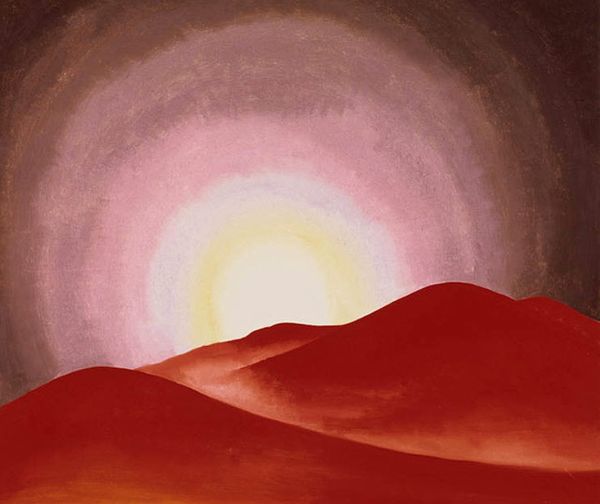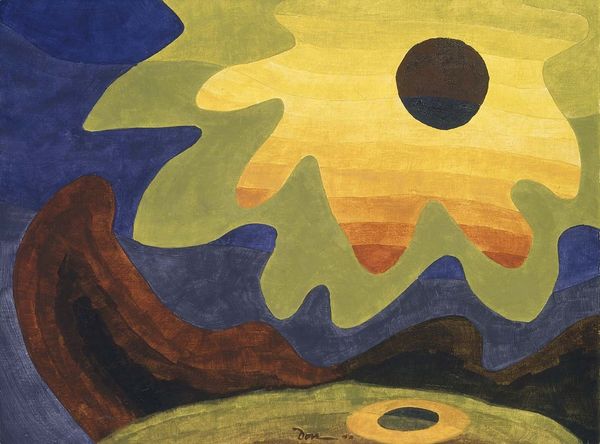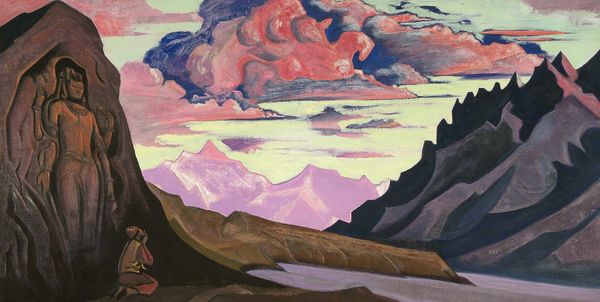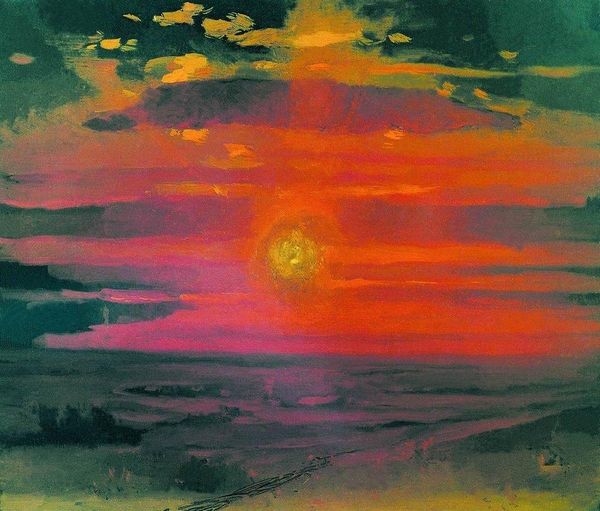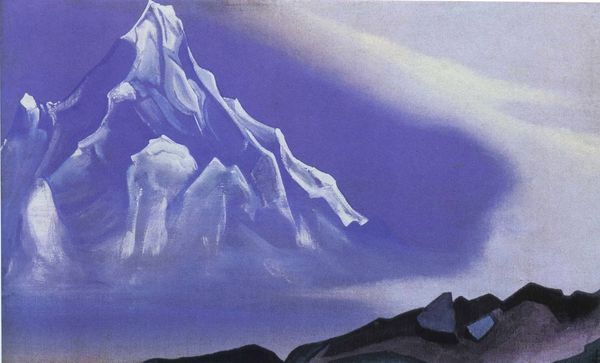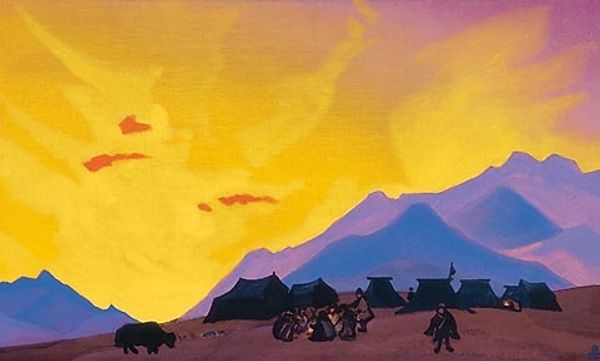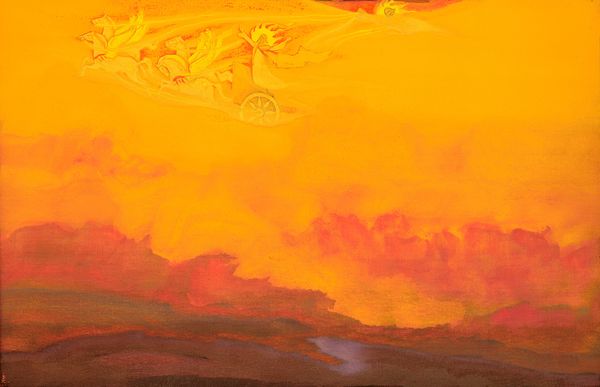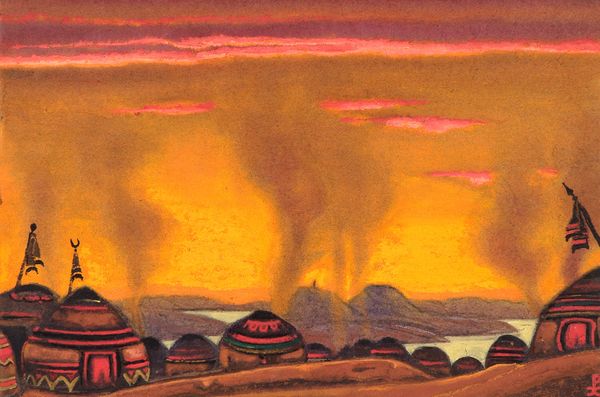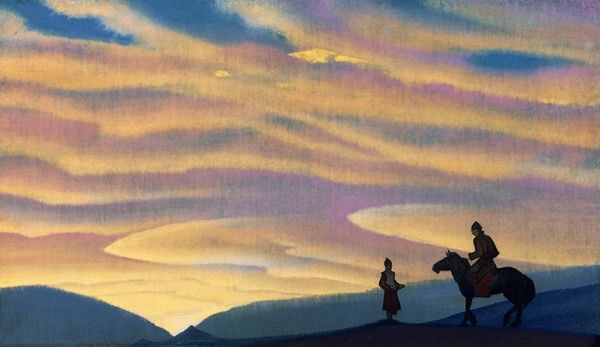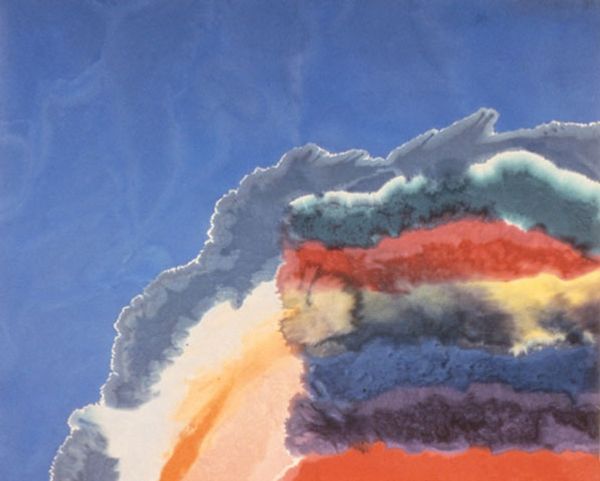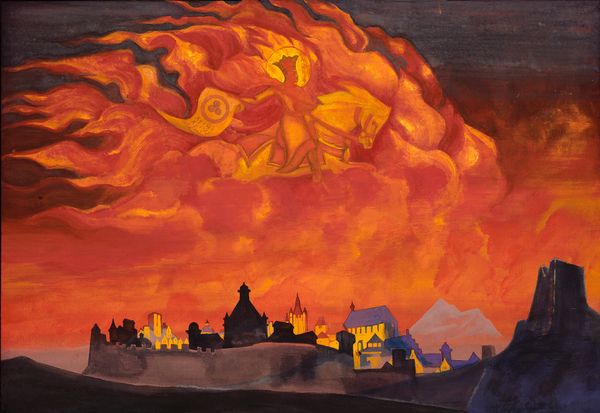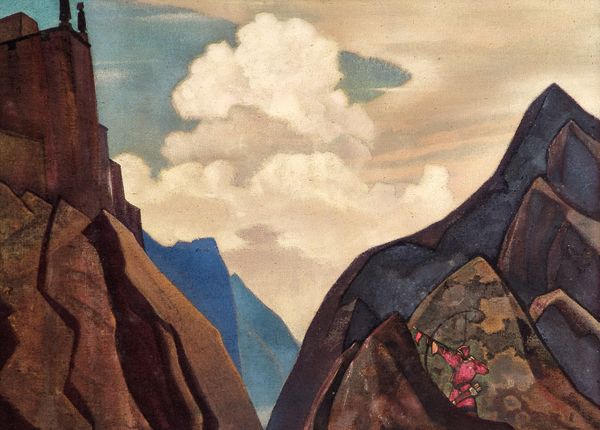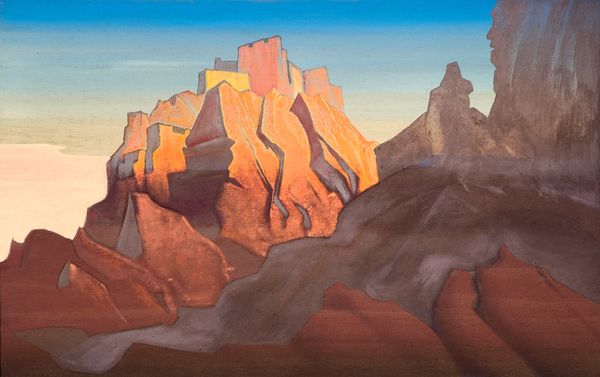
Dimensions: 91 x 152 cm
Copyright: Public domain
Curator: Let's turn our attention to Nicholas Roerich’s "King Gesar," painted in 1941 using oil paints. Editor: What strikes me immediately is the fiery intensity—that crimson and orange sky is so dramatic, it almost overwhelms the figure in the foreground. Curator: The figure you mention is the epic hero King Gesar, a central figure in Tibetan and Mongolian culture. Roerich was deeply interested in Eastern mythology. We see the King on horseback, a lone figure silhouetted against this immense, turbulent sky. The production of this painting likely involved careful layering of pigments to achieve such luminosity. Editor: The symbolism is thick, isn't it? Horses often represent power, virility, but here it also seems like a symbol of endurance. Gesar is positioned against what appears to be an apocalyptic sky. What historical context shaped such dramatic symbolism in 1941? Was Roerich influenced by WWII, by its overwhelming impact? Curator: Precisely. Roerich and his wife had been living in India since the 1920s, and though geographically removed from the European conflict, he was deeply aware of its impact. We see the implications in the making as well: his spiritual search, and the reality of his isolation and need for patronage in those dire times. Consider too that he would have needed reliable access to certain pigments, influenced in a way by the constraints of war time, which might have affected hue or availability of materials. Editor: And Gesar becomes this figure embodying strength in the face of destruction, a cultural hero invoked during tumultuous times. This image seems charged with anxiety and hope at the same time. That almost childlike depiction of sky against that rider. The entire painting becomes less a record of a historical figure and more like a personal expression of turmoil using icons of mythology and landscape. Curator: It is a fusion, yes, reflecting the cultural cross currents that defined so much of Roerich’s life and artistic output, and reflecting what remained readily to hand to translate this emotional response into material form. Editor: A compelling mix of personal feeling and universal archetypes rendered with a raw intensity. Curator: Indeed, it is a vibrant testimony to the enduring power of myth and the constraints of production.
Comments
No comments
Be the first to comment and join the conversation on the ultimate creative platform.
